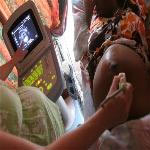
This is the VOA Special English Health Report.
A new study says fewer women in developing nations are dying of pregnancy-related causes. Researchers estimated how many mothers died during or soon after childbirth in 181 countries. They found a drop of more than 35 percent worldwide in the past 30 years.
By their count, the number fell from more than a half-million in 1980 to about 343,000 in 2008. That year, about 250 mothers died for every 100,000 live births worldwide.
The researchers say the maternal death rate has been falling almost one and a half percent a year since 1990. Earlier reports suggested little change between 1980 and 1990, but the new study disputes that.
The researchers used government records, medical records, surveys and other information. They developed new methods to get what they say are the best estimates yet for almost every country.
They say the progress is a result of greater efforts to reduce maternal deaths.
Christopher Murray at the University of Washington's Institute for Health Metrics and Evaluation in Seattle led the study. He says more education of women in developing countries has helped lower maternal death rates. More of them are giving birth in hospitals.
Doctor Murray says lower fertility rates around the world, combined with higher earnings, are also reducing deaths.
The nations found to have the biggest reductions were Egypt, Ecuador and Bolivia. The researchers say China also had a sharp drop.
But since 1990 maternal death rates have risen in some countries. Zimbabwe, for example, had a five and one-half percent increase per year. Afghanistan, India, Pakistan, Nigeria, the Democratic Republic of Congo and Ethiopia also had increases.
H.I.V. has slowed the progress in reducing maternal deaths. The study linked almost one in every five such deaths in 2008 to the virus that causes AIDS.
The researchers say maternal deaths rates have also increased in some wealthy countries. They found the number in the United States rose almost 42 percent since 1990. Countries such as Canada and Norway also had increases. Doctor Murray says at least part of the increase is likely the result of better record keeping.
The study also included the University of Queensland in Australia. The report is in the Lancet.
And that's the VOA Special English Health Report. I'm Steve Ember.
Caesarean deliveries at all-time high in US
Birth defects rise from lack of tests
Simple, low-cost ways to cut the risk of an early birth
Report calls attention to millions of preterm births
(來(lái)源:VOA 編輯:陳丹妮)
